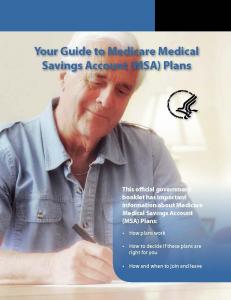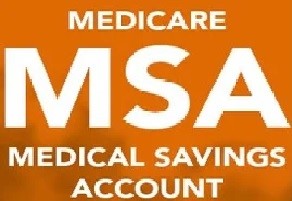"The MSA in Medicare: The Blueprint for Bipartisan National Health Care Reform"
The Medicare MSA is the blueprint to solving our national health care problem.”
ANTHEM, ARIZONA, UNITED STATES, May 24, 2023/EINPresswire.com/ -- Lee Benham is proud to unveil "The MSA in Medicare: The Blueprint for Bipartisan National Health Care Reform," a groundbreaking plan aimed at transforming the healthcare landscape. focusing on bipartisan support, this blueprint seeks to alleviate the burden of health insurance costs on American employers, sparking a new era of prosperity. Benham recognizes the urgent need for a unifying advocate who can rally support for American healthcare reform. At the heart of this transformative blueprint is the concept of transitioning from Defined Benefit programs to Defined Contribution Programs, akin to the shift from defined pension plans to 401K defined contributions in the 80s and 90s. By expanding options, choices, and freedoms, including the broader adoption of Medical Savings Account (MSA) plans, Benham envisions empowering Americans to effectively reduce premiums, eliminate taxes, and build wealth. Through the modernization of our inefficient healthcare system, American Healthcare Reform becomes the catalyst for fostering unity and propelling America towards prosperity.— Lee Benham
The current health insurance costs pose an economic impact on taxpayers. In 2021, the government spent $1.65 trillion of the $4.2 trillion spent on healthcare. Disturbingly, taxpayer costs are projected to escalate to $3 trillion by 2025. Such an unsustainable trajectory stands as the primary driver behind our mounting national debt. These soaring costs will render us unable to address our debt. To curb the rise in healthcare expenses, an alternative approach to government subsidies in our healthcare system must be introduced. Individuals must be given the choice to retain traditional Defined Benefit program or voluntarily opt for an alternative Defined Contribution program. The MSA in Medicare represents the blueprint for a paradigm shift in how we finance and structure our healthcare system.
The current landscape of our healthcare system consists of Defined Benefit Plans, such as Medicare, Medicaid, CHIP, Employer-sponsored insurance, and ACA Tax Credits. The taxpayer costs associated with these programs in 2021 are as follows: Medicare ($900 billion), Medicaid ($724 billion), CHIP ($22 billion), government subsidies for Employer-sponsored insurance ($280 billion), government contribution to Employer-Sponsored Insurance premiums ($36 billion), retiree Drug Subsidy Payments to Employer-Sponsored Insurance Plans ($10 billion), and ACA tax credits ($36 billion).
MSAs became a permanent part of the healthcare landscape under the Medicare Modernization Act of 2003. Since 2007, Medicare MSA plans have been available to the public. Notably, there is one company offering the Medicare MSA plan nationwide, operating in 35 states and expanding to additional states in 2024.
One of the MSA plans available in 35 states features a $5,000 deductible. Once the insured individual satisfies this annual deductible, the insurance company pays 100% of Medicare Covered Charges. Additionally, the insurance company facilitates the establishment of a separate Medical Savings Account (MSA) for the insured at a bank. Medicare covers the insurance premiums entirely, resulting in zero cost for the insured, and provides an annual deposit of $2,000 into the insured's savings account. The insured has the freedom to utilize these funds for healthcare expenses or choose to save or invest them. Any unused funds in the MSA roll over to the following year, accompanied by an additional $2,000 deposit into the insured's account. This arrangement enables the accumulation of a substantial asset while also setting aside funds for future healthcare needs.
Using the MSA in Medicare as a blueprint introduces an innovative approach to healthcare financing by providing government funds to ensure that every individual has the option to join an MSA plan. Under this plan, insured individuals under 65 would have access to the same type of plan currently available to those over 65. The government provides the funds in the form of age-based tax credits. Allowing insured individuals to utilize tax credits to then purchase personal portable health insurance plans from any company they choose.
The age-based tax credits work as follows:
0 - 19-year-olds, comprising 25% of the population with an average yearly healthcare cost of $3,300, would receive a $4,000 tax credit to purchase health insurance. Any unused funds would flow into their MSA account, accumulating tax-free interest for future healthcare expenses. The cost for this group is $330 billion.
29 - 49-year-olds, making up 35% of the population with an average yearly healthcare cost of $4,400, would receive a $6,000 tax credit to purchase health insurance. Unused funds would be allocated to their MSA account, earning tax-free interest for future healthcare expenses. The cost for this age group is $693 billion.
49 - 64-year-olds, accounting for 26% of the population with an average yearly healthcare cost of $9,513, would receive a $10,000 tax credit to purchase health insurance. Unspent funds would be directed to their MSA account, accruing tax-free interest for future healthcare expenses. The cost for this age group is $858 billion.
65- 84-year-olds, constituting 12% of the population with an average yearly healthcare cost of $16,000, would receive a $12,000 tax credit to purchase health insurance. Unused funds would be channeled to their MSA account, earning tax-free interest for future healthcare expenses. The cost for this age group is $475 billion.
84+ year olds, representing 2% of the population with an average yearly healthcare cost of $32,000, would receive a $15,000 tax credit to purchase health insurance. Any unutilized funds would be deposited into their MSA account, earning tax-free interest and growing for future healthcare expenses. The cost for this age group is $99 billion.
Total cost 2.5 trillion vs 4.5 trillion
The MSA Solution offers significant benefits to individuals participating in the program. an average American starting at age of 0 and continues until their retirement at age 65, will accumulate approximately $250,000. Those who are above-average health would have over $1,000,000 upon retirement. This empowers individuals to build substantial wealth over their lifetime of savings, providing them with financial security and resources for their healthcare needs. The MSA Solution not only achieves cost savings of over a trillion a year but also enables Americans to create a strong financial foundation for their future.
https://www.kff.org/medicare/issue-brief/faqs-on-health-spending-the-federal-budget-and-budget-enforcement-tools/#:~:text=Federal%20spending%20on%20domestic%20and,%246.4%20trillion%20(Figure%201).
https://view.officeapps.live.com/op/view.aspx?src=https%3A%2F%2Fwww.whitehouse.gov%2Fwp-content%2Fuploads%2F2023%2F03%2F24-1_fy2024.xlsx&wdOrigin=BROWSELINK
https://crsreports.congress.gov/product/pdf/R/R44530
https://home.treasury.gov/policy-issues/tax-policy/tax-expenditures
Lee Benham
msa-medicare.com
+1 480-825-4644
email us here
Visit us on social media:
Facebook
Twitter
YouTube
Medicare MSA comparison
Legal Disclaimer:
EIN Presswire provides this news content "as is" without warranty of any kind. We do not accept any responsibility or liability for the accuracy, content, images, videos, licenses, completeness, legality, or reliability of the information contained in this article. If you have any complaints or copyright issues related to this article, kindly contact the author above.



